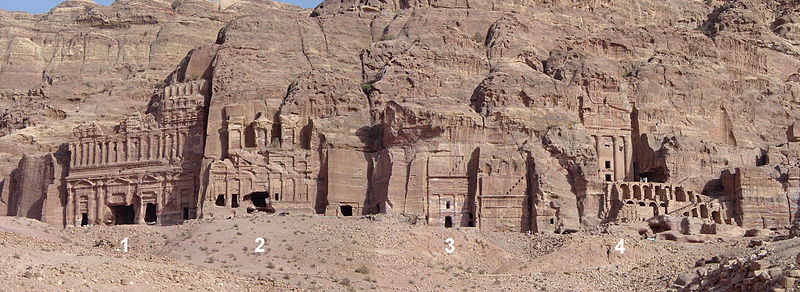
East Ridge Tombs
Petra, Jordan

|
East Ridge TombsPetra, Jordan |
These tombs are located on the East Ridge (also called the East Cliff) above Wadi Musa. Their facades are cut into the west face of Jabal al-Khubtha, a massive outcrop that towers east of the wadi and north of the Siq. As one of the most dramatic overlooks in Petra, the East Ridge was prime real-estate for royal or high-status tombs. For example, the long axis of the Colonnaded Street points directly at the Corinthian Tomb.
The most important tombs are named, or rather misnamed, as follows:
1 = Palace Tomb, 2 = Corinthian Tomb, 3 = Silk Tomb, 4 = Urn Tomb
Many people believe that the East Ridge monuments are "Royal Tombs," because (aside from the Khazneh) these are the most important facades in the most important location in the city of Petra. If you were a king of Petra, where else would you be buried? Nevertheless, we don't actually know who was buried here. As with most of the Petra tombs, the names of the deceased were inscribed on slabs that covered the loculi (wall niches) where they were interred. Eventually the slabs disintegrated or were broken out, and the names were lost to posterity.
The East Ridge tombs were built in order, around the cliff from south (photo right) to north (photo left). Sextus Florentinus' tomb (north of the Palace Tomb) dates to 129 AD, the year of his death. The earlier tombs are inferred to have been built during the preceding half-century, which would date the Urn Tomb to around 70 AD, at a guess.

|

|